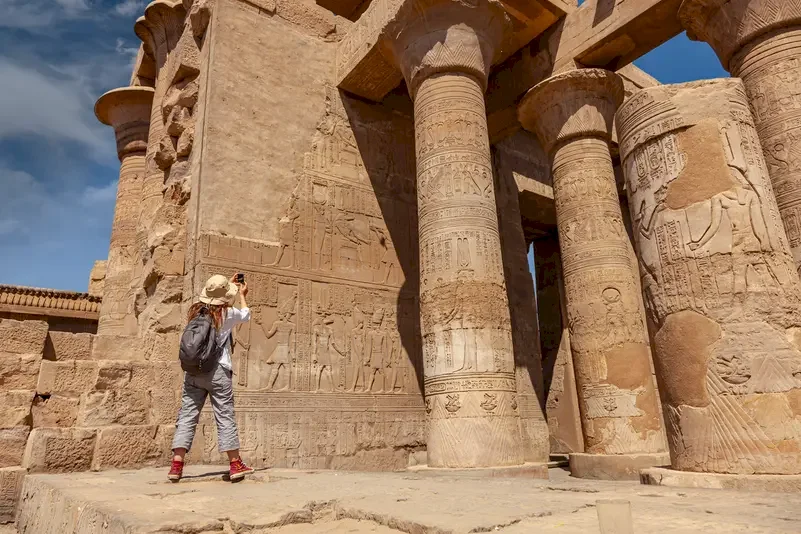
A Scientific Study Reveals a Mysterious Secret About Karnak Temple in Egypt
SadaNews - A new scientific study has resolved one of the most mysterious secrets in Egyptian archaeology after decades of debate about the true age of the Karnak Temple in Luxor.
After years of discussion among researchers about whether the temple dates back to the early third millennium BC or a later period, a recent British-Swedish study revealed scientific evidence confirming that Karnak was built around four thousand years ago, specifically during the Old Kingdom, to serve as a religious center dedicated to the worship of the one god Amun Ra.
Built About 4,000 Years Ago
The study conducted by researchers from the University of Southampton in the UK found that the Karnak Temple in Luxor, one of the most prominent temples of ancient Egypt, was constructed approximately 4,000 years ago.
The researchers, led by Dr. Ben Bennington from the University of Southampton and Dr. Angus Graham from Uppsala University in Sweden, relied on the largest geoarchaeological survey of its kind for the archaeological site, which included the analysis of 61 samples of geological sediments and tens of thousands of pottery shards found within and around the temple.
The study, published in the scientific journal Antiquity, explained that the land of Karnak was originally a high island formed as a result of changes in the ancient Nile's courses and was not suitable for permanent settlement until about 2520 BC due to recurring floods.
Old Kingdom Era
However, as the river channels stabilized later, the first signs of settlement and worship began at the site during the Old Kingdom (2591–2152 BC), specifically between 2300 and 2000 BC, which aligns with the earliest pottery evidence found in the area.
According to the findings, the temple was not established in the third millennium as previously thought, but was founded later to become a religious center dedicated to the worship of the unified god "Amun Ra," who combines the air god "Amun" and the sun god "Ra."
Dr. Bennington confirmed that the new study presents the most accurate chronological understanding of the development of the Karnak Temple, explaining that the results reveal how the site "transitioned from a small island in the Nile to a major religious institution that became one of the pillars of ancient Egyptian civilization."
Expanding the Study's Scope
The study noted that the choice of the island as the temple's location was associated with profound religious symbolism, as ancient Egyptian texts describe the creator god Amun Ra as having emerged from the high land amidst the waters, making Karnak an architectural embodiment of the initial creation idea in ancient Egyptian belief.
The research team is currently planning to expand the study to include other religious sites in Luxor, in an attempt to understand the relationship between the river environment and religious architecture in ancient Egypt, and how natural changes contributed to the formation of major religious centers over the ages.

Teenagers Prefer Talking to Chatbots Over Humans

The Size of a Sand Grain... A Robot That Can Enter Blood Vessels and Deliver Drugs Precise...

High Demand for Memory Chips May Raise Smartphone Prices... What's the Story?

"TikTok" Allows Users to Reduce AI-Generated Content

Study: Smoking One Cigarette a Day Harms the Heart at All Levels

First booster of the developed SpaceX rocket fails during test

Almonds or Pistachios: Which is Better for Heart Health and Blood Sugar?

